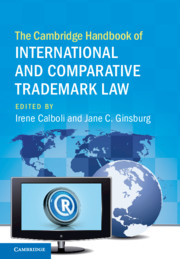Book contents
- The Cambridge Handbook of International and Comparative Trademark Law
- The Cambridge Handbook of International and Comparative Trademark Law
- Copyright page
- Contents
- Editors and Contributors
- Foreword
- Preface
- Part One International Aspects of Trademark Protection
- 1 The Trademark Provisions in the Paris Convention for the Protection of Industrial Property
- 2 A Look at the Trademark Provisions in the TRIPS Agreement
- 3 The Internationalisation of Trademark Protection
- 4 The Trademark Provisions in Post-TRIPS Mega-Regional Trade Agreements
- 5 The Protection of Well-Known Marks under International Intellectual Property Law
- 6 Regional Trademark Protection
- 7 Territoriality and Supranationality
- 8 Alternative Dispute Resolution for Trademark Disputes
- Part Two Comparative Perspectives on Trademark Protection
- Index
3 - The Internationalisation of Trademark Protection
Mapping and Documenting Twenty-Five Years of (Post-Paris Convention and) Post-TRIPS Trademark Agreements
from Part One - International Aspects of Trademark Protection
Published online by Cambridge University Press: 18 September 2020
- The Cambridge Handbook of International and Comparative Trademark Law
- The Cambridge Handbook of International and Comparative Trademark Law
- Copyright page
- Contents
- Editors and Contributors
- Foreword
- Preface
- Part One International Aspects of Trademark Protection
- 1 The Trademark Provisions in the Paris Convention for the Protection of Industrial Property
- 2 A Look at the Trademark Provisions in the TRIPS Agreement
- 3 The Internationalisation of Trademark Protection
- 4 The Trademark Provisions in Post-TRIPS Mega-Regional Trade Agreements
- 5 The Protection of Well-Known Marks under International Intellectual Property Law
- 6 Regional Trademark Protection
- 7 Territoriality and Supranationality
- 8 Alternative Dispute Resolution for Trademark Disputes
- Part Two Comparative Perspectives on Trademark Protection
- Index
Summary
In a world of globalised commerce, the application of the principle of territoriality in trademark law results in complexities and inconveniences to trademark proprietors who desire legal protection in numerous jurisdictions. The adoption and ratification of several important international intellectual property agreements formed the backbone of a global trademark protection system. In terms of multilateral instruments establishing a normative framework for trademark protection internationally, the oldest of them is the Paris Convention for the Protection of Industrial Property, signed in 1883 (Paris Convention). Two important basic principles of international law contained in the Paris Convention – namely, the national treatment principle1 and the principle of independence of rights2 – provided the fundamental terms of engagement between country states in the Paris Union3 for the protection of trademarks internationally.4 These two basic principles have been preserved and enhanced in the more recent Agreement on Trade-Related Aspects of Intellectual Property Rights (TRIPS) concluded in April 1994.5 However, it may be said that the Paris Convention contained limited provisions on substantive trademark law and there remained white spaces which required the international trademark community to continue working on it.
- Type
- Chapter
- Information
- Publisher: Cambridge University PressPrint publication year: 2020

